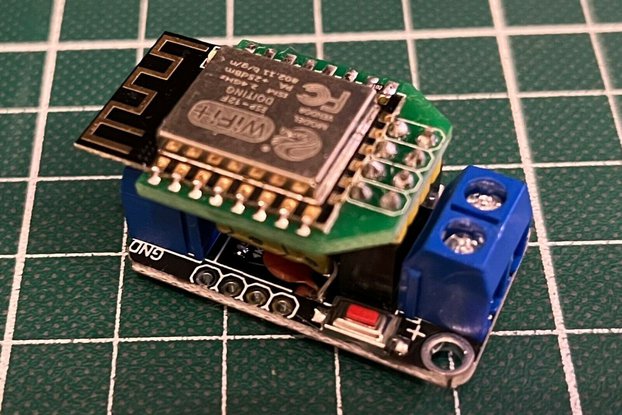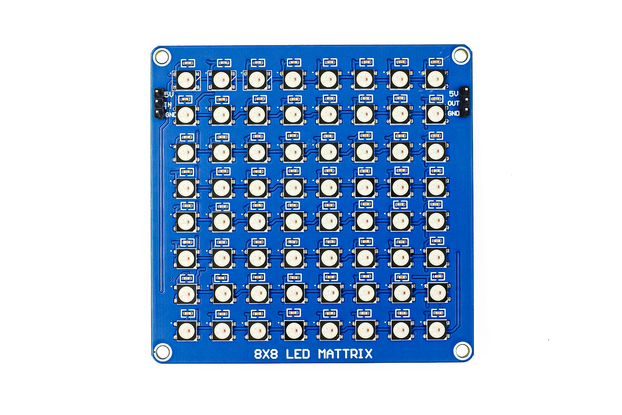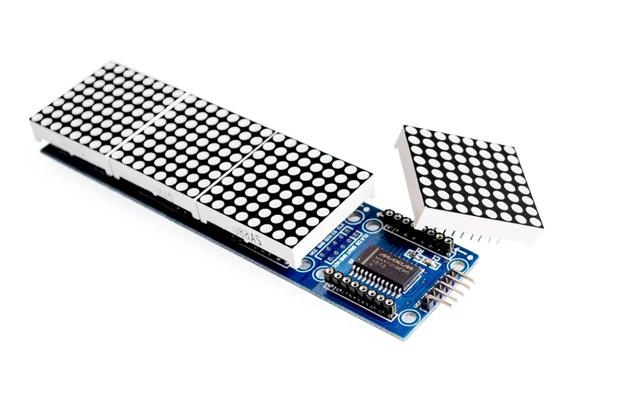A Large 2.3" 6 digit LED display for electronic projects & development use - SPI Interface
Designed by Adrian's Electronics Blog in United Kingdom
This product is no longer available for sale.
The seller may be offering an improved version or it may be hanging out on the beach, enjoying the retired life.
What is it? Ideal for electronics hobbyists this is a 6 digit 7 segment LED display PCB featuring 2.3" high red 7 segment displays. It has a standard SPI interface which supports both 3.3V and 5V log…
Read More…What is it?
Ideal for electronics hobbyists this is a 6 digit 7 segment LED display PCB featuring 2.3" high red 7 segment displays. It has a standard SPI interface which supports both 3.3V and 5V logic level inputs and is suitable for connecting to any microcontroller with an SPI interface. It can be used for various electronics projects such as clocks, stopwatches, timers etc where any situation requires information to be displayed readable at a distance. The PCB comprises of 6 TPIC6B595 shift registers in a chain driving 2.3" high Common Anode LED display modules. No multiplexing is used to drive the displays. Four diagnostic LED's on the data input lines aid in troubleshooting code and connection issues.
Why did you make it?
This was designed where I needed a large 7 segment display and looking at the popular MAX7219 I found that displays are 0.56" maximum. I needed something much larger so with the limitations of the MAX7219 and similar chips I designed my own using a standard SPI interface using power shift registers for each digit.
What makes it special?
This display board has a standard interface making it suitable for most microcontrollers. It is compatible with 3.3V and 5V logic level inputs and does not need any custom libraries to use it. The board has some status LED's which make it ideal for project development use as they indicate the status of the signal inputs to aid in diagnosing code and wiring issues. It is powered from a 12V supply and has an onboard voltage regulator which provides a 5V output which could be used to power an Arduino etc. In a nutshell it is a large version of the popular display modules typically available on Amazon / eBay which as a product does not seem to be available.
Further technical info
Brief overview
This PCB can be used both as a development tool in conjunction with a microcontroller or could be used in a final one off project. It is built using through hole components for ease of assembly and uses high efficiency LED display modules giving a power consumption of around 700mA when all segments on all digits are lit. New, old stock displays have been used to keep the costs down as the LED displays are typically $10 each. They are fitted into sockets so different colour LED's can be swapped out if needed. Diagnostic LED’s on the data input lines will aid in troubleshooting code and / or connection issues. The LED display modules will be supplied with the PCB unfitted to avoid damage in shipping and also it enables the buyer to set the height of the displays from the sockets by cutting the pins to the required length.
Power input
The board should be powered from a 12V 2A regulated supply; a diode protects against reverse polarity connection and there is a 5V regulator on board which powers the IC’s on the board. The LED modules are powered from 12V as they have a voltage drop of 8.4V (green) and 7.8V (red) – there are 4 LED chips per segment and two on the decimal points. The reverse polarity protection diode on the input gives approximately 11.4V on the anode pins. Segment current is between 13 and 15mA depending on the LED modules used as some are from different batches.
Data input and segment control
Data is input with the standard SPI interface and additionally the Output Enable pin is also brought out onto the data input connector. This, unlike the other inputs is active LOW so should be connected to ground to enable output or could be connected to a PWM pin on a microcontroller to control display brightness. Example code on my blog has this feature. Data direction is right to left, that is the rightmost digit is the first shift register on the chain and the segments are connected to the shift register outputs in the following format:-
{Q0, Q1, Q2, Q3, Q4, Q5, Q6, Q7} --> {g, f, e, d, c, b, a, DP} So, an example array for a 7 segment display would be:-
Hex {0x7e,0x30,0x6d,0x79,0x33,0x5b,0x5f,0x70,0x7f,0x7b} Binary {B01111110, B00001100, B10110110, B10011110, B11001100, B11011010, B11111010, B01001110, B11111110, B11011110}
LED indicators
The output enable pin is active LOW so should be connected to ground or a PWM pin for brightness control. The LED on the OE pin will light red if the output is disabled so if you have no display check this LED to indicate the OE pin’s logic level. It will glow dimly if PWM is used to control display brightness on lower brightness settings. The other LED’s will flicker or light with varying brightness levels depending on the signal duty cycle. Amber is used to indicate data is present whilst latch and clock pins will light in green. Ultra bright LED’s have been used to show something even if the duty cycle of the input signal is very low. They light very bright with only 1mA of current.
Demo code for Arduino as shown in the video available in the downloadable files.

$9.00
Free Shipping!

$7.50
Free Shipping!

$24.99
Free Shipping!

$25.00
Free Shipping!
By clicking Register, you confirm that you accept our Terms & Conditions
We recognize our top users by making them a Tindarian. Tindarians have access to secret & unreleased features.
We look for the most active & best members of the Tindie community, and invite them to join. There isn't a selection process or form to fill out. The only way to become a Tindarian is by being a nice & active member of the Tindie community!
